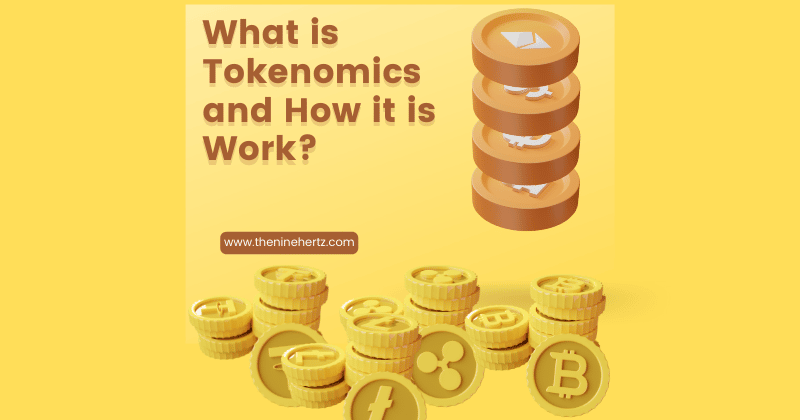Tokenomics is the study of the Token economy. It is a blend of Token and economics. Tokenomics Token mainly focuses on investment decision making and amalgamation of Token demand characteristics. Tokenomics was first constructed as a form of microeconomics. Since then, Tokenomics has grown to encompass both macroeconomic and blockchain Token projects. The Tokenomic perspective has also been increasingly adopted by traditional financial institutions such as banks and venture capitalists.
Core features of tokenomics
Tokenomics is the study of tokens, which are digital assets that are used to represent a range of assets and permissions on a blockchain or other distributed ledger. Tokenomics encompasses a wide range of topics, including token design, token distribution, and token economics. Tokenomics is a relatively new field, and there is still much to be explored in terms of how best to design and distribute tokens. However, there are a few core features that are essential for any good tokenomics model.
There are a few key features of tokenomics that are worth considering
Mining and staking
when it comes to mining and staking. The first is the supply. This refers to the total amount of tokens that will be created. It is important to consider the supply because it can have an impact on the price of the token. If there is a high supply, then the price will be lower, whereas if there is a low supply, then the price will be higher. The second feature is distribution. This refers to how the tokens will be distributed amongst the participants. For example, if there are more miners than stakers, then the miners will receive more tokens. The third feature is the incentives. This refers to what participants will receive for participating in mining or staking. For example, miners may receive rewards for being active and contributing to the network, and stakers may receive interest on their tokens. All of these features need to be considered when designing a tokenomics strategy for mining and staking.
Yields
Decentralized finance platforms need to have a healthy yield in order to attract users and keep them locked into the platform. This yield is generated by the fees that are charged for using the services on the platform. The higher the fees, the higher the yield. The yield is also influenced by the price of the tokens that are being traded. If the price of the tokens goes up, the yield goes down. If the price of the tokens goes down, the yield goes up. The yield is also influenced by the length of time that the user locks their tokens into the platform. The longer they lock their tokens, the higher the yield. All of these factors need to be taken into account when designing a decentralized finance platform.
Token burns
Token burns are a type of incentive system used in cryptocurrency to help control the supply of tokens and stabilize the price. Under this system, a portion of each transaction is destroyed, or “burned.” This reduces the total supply of tokens, making them more scarce and therefore more valuable. In addition, it helps to discourage speculation by making it more costly to trade large amounts of tokens. As a result, token burns can help to stabilize the price of a cryptocurrency and ensure that it remains accessible to its intended users.
Limited vs Unlimited Supplies
The term “Tokenomics” refers to the economic model underlying a cryptocurrency token. One key feature of tokenomics is the supply of tokens. In some cases, the supply of tokens is limited, which can help to Increase demand and drive up prices. In other cases, the supply is unlimited, which can help to keep prices stable. Each approach has its own advantages and disadvantages. Limited supplies can result in high prices and profits for early investors, but they can also lead to severe price fluctuations. Unlimited supplies, on the other hand, can help to keep prices stable, but they may also result in low demand and decreased value for token holders. ultimately, it is up to the issuer of a token to decide what kind of supply will best meet their objectives.
Token allocations and vesting periods
Tokenomics is the study of token distribution and allocation within an economy. A key component of tokenomics is the concept of vesting periods, which dictate when tokens are released and how they are distributed among participants. Vesting periods help to ensure that tokens are distributed fairly and incentives are aligned correctly. For example, a project may release tokens to founders over a four-year period, with 25% of the tokens being released immediately and the remaining 75% vesting quarterly. This ensures that founders have a long-term stake in the success of the project and provides an incentive for them to continue working on the project even after it has launched. Tokenomics also helps to ensure that new participants can enter the ecosystem and benefit from its growth. By releasing additional tokens over time, projects can create a healthy economy that allows everyone to participate and benefit.
The Role of Tokenomics in Cryptocurrency
Cryptocurrency is a new and emerging market, and tokenomics is an important part of its development. Tokenomics helps to ensure that tokens are properly distributed and allocations are fair. It also helps to keep prices stable and prevent speculation. Ultimately, tokenomics is a key tool for managing the economy of a cryptocurrency and ensuring its long-term success.
Tokenomics is the study of how tokens are used in cryptocurrency ecosystems. While each ecosystem is different, there are some common patterns that tend to emerge. For example, many cryptocurrencies use a two-tier structure, with a small number of “validators” who are responsible for verifying transactions and maintaining the ledger, and a larger group of “users” who interact with the ledger but don’t play a role in its upkeep. This structure helps to ensure that the network is secure and that transaction fee are kept low. In addition, many cryptocurrencies use a proof-of-work system, in which users are rewarded for solving complex mathematical problems. This system helps to prevent bad actors from taking control of the network and ensures that new tokens are released slowly and steadily into the ecosystem. Tokenomics is a complex and ever-evolving field, but understanding the basics is essential for anyone looking to invest in or use cryptocurrencies.
Also Read – How NFT Tickting Disrupt industry
Token governance
Another important aspect of tokenomics is governance. Good governance is essential for any cryptocurrency project, as it helps to ensure that the network is secure and that decisions are made in the best interests of the community. Many projects use a decentralized governance model, in which decisions are made by consensus among the community. This model has advantages, as it allows everyone to have a say in the direction of the project. However, it can also be slow and inefficient, as reaching consensus can be difficult. Other projects use a more centralized governance model, in which a small group of individuals make decisions on behalf of the community. This model is faster and can be more efficient, but it can also lead to centralization of power and decision-making. Ultimately, the best governance model for a project will depend on its specific needs and objectives.
Tokenomics is a complex and ever-evolving field, but understanding the basics is essential for anyone looking to invest in or use cryptocurrencies. Tokenomics helps to ensure that tokens are properly distributed and allocations are fair. It also helps to keep prices stable and prevent speculation. Ultimately, tokenomics is a key tool for managing the economy of a cryptocurrency and ensuring its long-term success.
Token economics is the study of how tokens are used in cryptocurrency ecosystems. While each ecosystem is different, there are some common patterns that tend to emerge. For example, many cryptocurrencies use a two-tier structure, with a small number of “validators” who are responsible for verifying transactions and maintaining the ledger, and a larger group of “users” who interact with the ledger but don’t play a role in its upkeep.
This structure helps to ensure that the network is secure and that transaction fee are kept low. In addition, many cryptocurrencies use a proof-of-work system, in which users are rewarded for solving complex mathematical problems. This system helps to prevent bad actors from taking control of the network and ensures that new tokens are released slowly and steadily into the ecosystem. Tokenomics is a complex and ever-evolving field, but understanding the basics is essential for anyone looking to invest in or use cryptocurrencies.
Tokenomics helps to ensure that tokens are properly distributed and allocations are fair. It also helps to keep prices stable and prevent speculation. Ultimately, tokenomics is a key tool for managing the economy of a cryptocurrency and ensuring its long-term success.
Frequently Asked Questions
Here are some Tokenomics-related questions and try to give relevant answers in this faq section.
What does Tokenomics mean by crypto?
Tokenomics, or the study of tokens, is a relatively new field that looks at the economic aspects of cryptocurrencies. Cryptocurrencies are digital or virtual assets that use cryptography to secure their transactions and to control the creation of new units. Tokens are a type of cryptocurrency that represents a real-world asset or utility. Tokenomics is concerned with how these tokens are used, how they are exchanged, and what effects they have on the economy. Tokenomics can be used to help predict price movements and to identify investment opportunities. It is an important tool for understanding the complex world of cryptocurrencies.
How do you read crypto Tokenomics?
In order to read crypto Tokenomics, you must first understand what a Token is. A Token is a digital asset that is built on top of an existing blockchain.Tokens can represent anything of value, including but not limited to: commodities, loyalty points, assets, and even other cryptocurrencies. In order to read crypto Tokenomics, you must have a basic understanding of how blockchain technology works. However, once you understand the basics of blockchain and Tokens, reading crypto Tokenomics is relatively straightforward. There are a few key metrics that you should look at when reading crypto Tokenomics, including: total supply, circulating supply, max supply, token price, and market capitalization. By understanding these key metrics, you will be able to get a good sense of a particular cryptocurrency’s strength and weaknesses.
Which Tokenomics is best?
Decentralized exchanges are becoming increasingly popular as the crypto industry evolves. However, with so many different exchanges to choose from, it can be difficult to know which one is right for you. When it comes to choosing a decentralized exchange, there are a few key factors to consider. First, look at the fees charged by the exchange. Some exchanges charge high fees, while others have very low or even no fees. Second, consider the security of the exchange. Some exchanges have been hacked in the past, so it’s important to choose an exchange that has robust security measures in place. Finally, take a look at the liquidity of the exchange. Higher liquidity means that there are more buyers and sellers on the platform, which can make it easier to trade your assets. With these factors in mind, you’ll be able to choose the right decentralized exchange for your needs.
What is Tokenomics example?
For example, when a company launches an initial coin offering (ICO), it is selling tokens that can be used to purchase its products or services. The distribution of these tokens is an important part of tokenomics. If the ICO is successful, the demand for the tokens will increase, driving up their price. Tokenomics also takes into account how various factors, such as regulation or market conditions, can affect the supply and demand for tokens. By understanding these dynamics, companies can better assess the risk and potential return of investing in a particular token.
Great Together!









